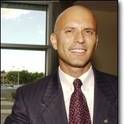
This article provides a history of Sweden's financial liberalization, with special attention on the deregulation of interest rates and the ceiling on housing loans from banks and finance institutions. Throughout the 1980's, Sweden's Prime Minister Olof Palme stood out on the international stage as one of the leading opponents of the financial deregulation, monetarism, and fiscal austerity. The article recounts his efforts to resist and then compromise with this neoliberal agenda. After Palme's sudden assassination, in February 1986, the new government accepted a Riksbank proposal for elimination of Sweden's long-standing system of foreign exchange controls - the transnational policy analog to the domestic credit controls that had been abolished just months earlier. As a result, the government and the central bank were soon without the policy tools to slow down an overheating economy and housing bubble, or to protect the currency from speculative attack. In September 1992, the Riksbank raised the interest rate on overnight borrowing to 500 percent. What followed was a collapse and bailout in the banking sector, a redistribution of wealth and power to creditor groups, severe recession and double-digit unemployment rates.
- Regulation,
- Central Banking,
- Fiscal Policy,
- Monetary Policy,
- Incomes Policies,
- Inflation,
- Unemployment
Available at: http://works.bepress.com/timothy_canova/10/
